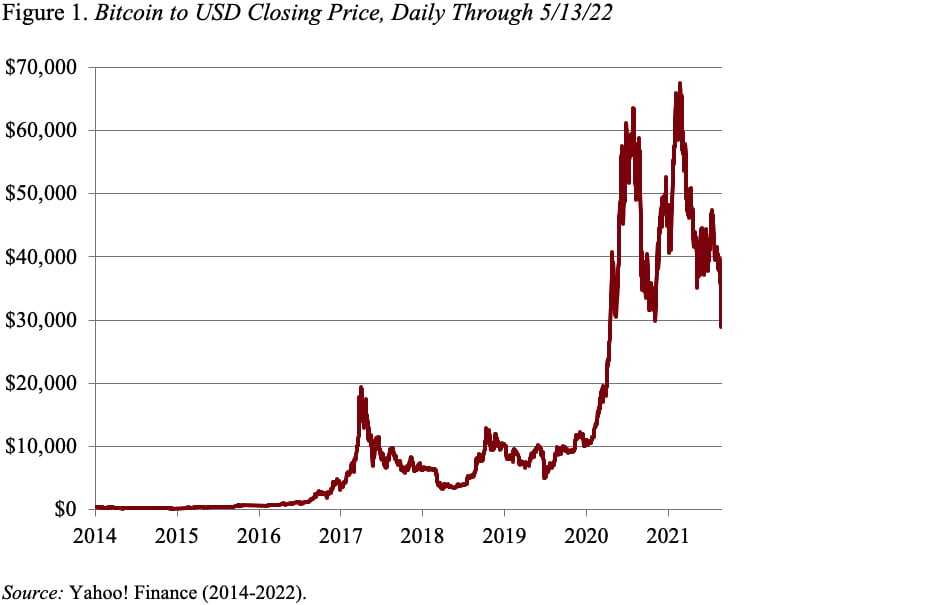
Bitcoin in 401(k) Plans Is a Terrible Idea
Alicia H. Munnell is a columnist for MarketWatch and senior advisor of the Center for Retirement Research at Boston College.
What is Fidelity thinking?
In late April, Fidelity, the nation’s largest provider of 401(k) plans, said that it would make it possible for participants to invest a portion of their 401(k) account balances in bitcoin. The digital assets account would become widely available by midyear and could be integrated into the 401(k) investment menu, just like traditional mutual funds. If the plan added the option, participants would be able to allocate as much as 20% of something — not clear whether it’s contributions or assets — to the bitcoin account. The account fee will be between 75 and 90 basis points depending on the employer and amount contributed.
My plan was to just rail against the proposal, based on the notion that people should not be investing in things they don’t understand. I don’t really understand it myself. It’s a system of payment but the unit of transaction also has a value that appears to fluctuate significantly. Warren Buffett said he wouldn’t buy all the bitcoin in the world for $25. Bitcoin doesn’t produce any cash flow, so it doesn’t generate any returns for the investors. The only way investors can generate a profit is to sell it back for a higher price. It’s much more like gambling than a productive investment.
Although I’m not above railing, I can actually say more because an ERISA expert makes a reasoned case against Bitcoin for 401(k) plans in a recent law review article. More broadly, the article explores whether five categories of alternative investments: 1) real estate investment trusts (REITs); 2) art; 3) Bitcoin and other cryptocurrencies; 4) ESG funds; and 5) hedge funds and private equity – should be made available to 401(k) participants. (For the record, REITs, hedge funds, and private equity pass the test; art funds, Bitcoin, and ESG funds do not.)
Whether or not a particular asset class is appropriate for 401(k) plans involves a fact-driven inquiry that involves applying ERISA’s fiduciary standards of prudence, diversification, and loyalty. That is, is the asset class generally acceptable? Are the trustees behaving solely in the interest of participants? How could the asset class improve diversification?
The threshold consideration is the general acceptability of the asset class to a broad group of investors, and, the author argues, particularly to the trustees of defined benefit plans. Defined benefit plans and 401(k)s are “like” “enterprises” in that they both accumulate retirement resources for distribution to participants, and therefore one might think they would be open to similar asset classes. But the two types of plans also differ in ways that would suggest 401(k) trustees should be more cautious in terms of investments than trustees of defined benefit plans. Defined benefit plans involve large piles of capital managed by professional fiduciaries with long time horizons; 401(k) plans involve small accounts managed by unsophisticated investors with shorter time horizons. Thus, it makes no sense to offer an asset class to 401(k) participants before it has been accepted by the professional trustees of defined benefit plans.
Bitcoin fails this threshold test of acceptability; it has not been embraced by defined benefit trustees. That is not surprising given that Bitcoin is new (2009); the volume of Bitcoin investments is relatively small; and Bitcoin prices are volatile, trading in thin markets. As Figure 1 shows, Bitcoin has lost half its value since January.

In short, adding Bitcoin to the menu of 401(k) investments is not prudent. Fidelity should not be opening the door to this type of activity. Our retirement system is wobbly enough; let’s not turn 401(k) plans into casinos!






